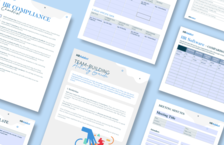Running a human resources department? Then it’s vital that you have access to relevant and up-to-date HR documents. Why? Because without them, you could wind up struggling to effectively manage your HR department.
From hiring and onboarding to training and terminations, there is so much involved in successfully running an HR department. The good news? Having the right HR forms, templates and documents at hand can assist you in navigating the typically cumbersome — and sometimes complicated — processes involved in HR.
Below we bring you 24 essential HR templates. Created by HRAddict’s team of experts, these templates are free to download (one per week, when you sign up to our HR newsletter) and come in an easy-to-use checklist format. What’s more, they’re ideal for businesses of all types and sizes, including for small businesses, large conglomerates, and everything else in between.
24 essential human resources templates
Having the right human resources templates at your disposal saves you time, helps you maintain consistency across your organization, and ensures you stay compliant with employment laws and regulations. By using these HR templates, you’ll be able to streamline HR processes, minimize errors and keep the management of your workforce organized.
Ready to elevate the success of your HR department?
1. Employee Handbook Template

This employee handbook template is designed to introduce your employees to different aspects of your company, such as your values, vision and code of conduct, including expected workplace behavior.
Use it to outline your hours of operation, sick leave policy, bonus incentives, and more. You can also use it to implement uniform policies across your organization, improve onboarding for new employees, and enhance overall workplace productivity.
2. HR Compliance Checklist
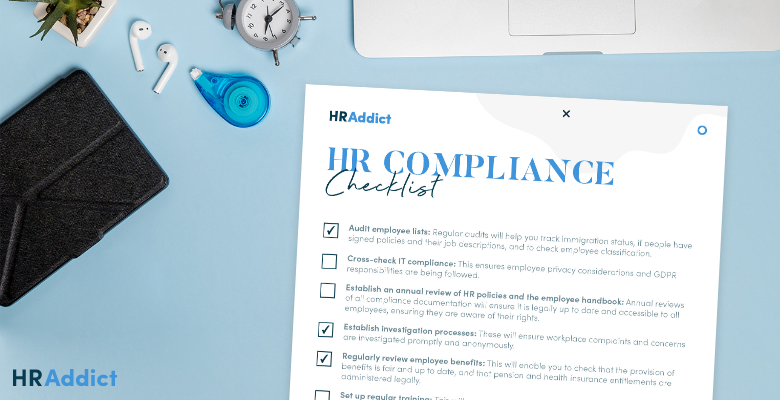
This checklist specifies the tasks, procedures and requirements that you need to follow to stay compliant with the latest employment laws, regulations, industry standards and internal policies. It plays a crucial role in:
- Minimizing legal risks (eg:, employee-based grievances, fines and lawsuits)
- Minimizing damage to your company’s reputation
- Supporting recruiting efforts
- Supporting employee retention
- Cultivating a discrimination-free environment
- Developing fair and ethical behaviors
- Creating a fair and legally sound workplace
3. HR Policies Handbook
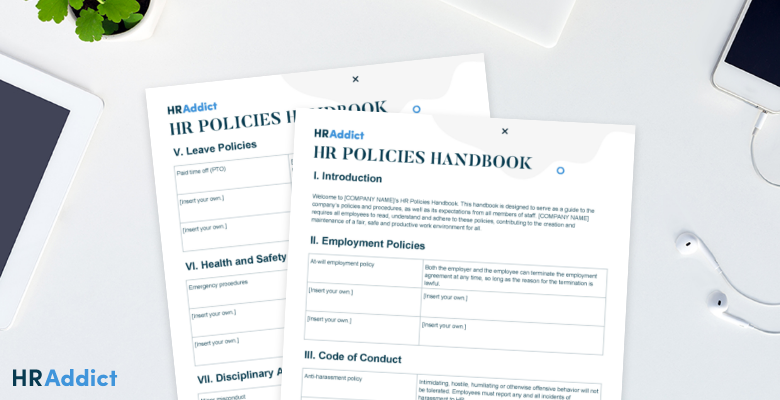
This is an important handbook for fostering a transparent, professional work environment. Use it to include information relating to all HR policies, including employee conduct, benefits, leave and workplace safety, as well as your company rules, procedures and employee expectations.
Encourage all staff members to read it and adhere to the policies outlined. Regularly review and update the information contained within it to ensure it remains afloat with the latest industry laws and regulations.
4. HR Software Comparison Worksheet

Want to make smarter HR technology investments and improve workplace operations? Then this is an indispensable worksheet.
Available in both Word and PDF format, it can be printed off and used for comparing different HR tools. Compare costs, features and benefits to simplify decision-making, save time, and find the best fit for your organization.
5. Meeting Minutes
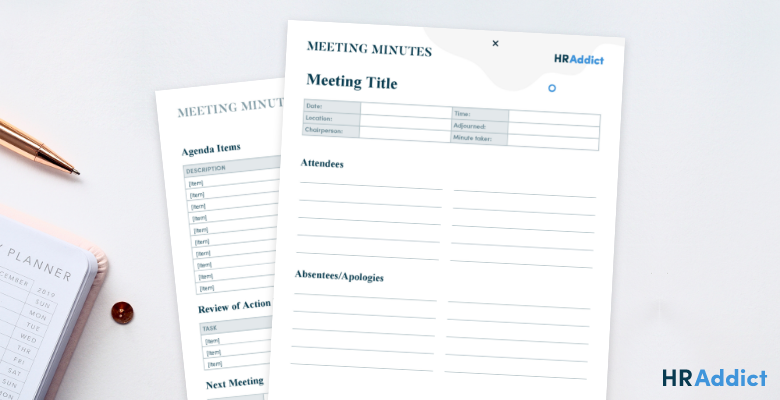
This template is perfect for recording meeting minutes, including key discussions and action points. It’s a great way to maintain transparency in meetings, and to ensure accuracy, accountability and clarity in workplace communications.
This is an important tool for keeping meetings organized, improving productivity, and keeping all stakeholders informed and aligned at all times.
6. Salary Benchmarking Assessment
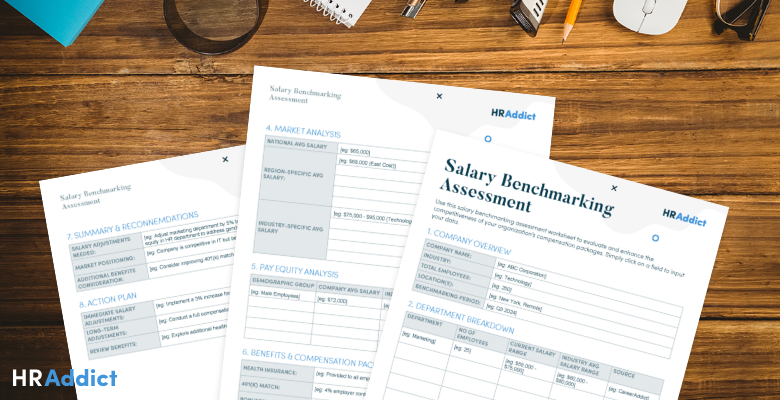
This free worksheet is ideal for analyzing and comparing salaries within different industries. Use it to gain insights into the latest market trends, and to implement fair, competitive compensation packages for employees.
Regular salary benchmarking assessments help to maintain employee satisfaction and improve retention.
7. Team-Building Activity Guide

Looking for ideas to take your teamwork and collaboration efforts to the next level? Use this activity guide for inspiration! The team-building exercises outlined are designed to strengthen employee relations, and include creative tasks, problem-solving games and motivational activities.
This guide is packed with useful ideas to enhance communication, increase productivity and foster a positive work culture. Use some — or all — of the ideas included to boost engagement and ensure your employees feel valued.
8. Employee Action Plan

This free plan is valuable in managing employee performance and development. Use it to address areas for improvement, identify potential solutions and track progress.
In turn, you can provide employees with structured feedback, set measurable goals and ensure they have the support they need. It’s designed to encourage clear communication and foster a positive work environment.
9. Employee Benefits Survey
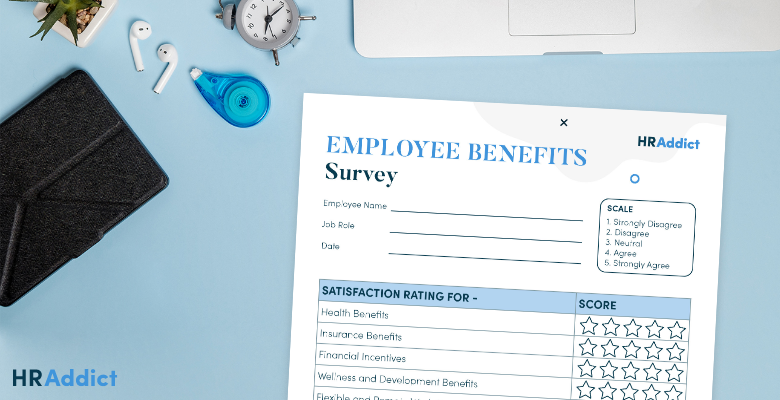
This ready-to-use survey is designed to help you gather important information about your available benefits packages. With its simple five-star rating system, you can quickly and easily assess employee satisfaction levels regarding health and insurance benefits, financial incentives, and more.
With this survey, HR teams can:
- Identify the benefits that matter most to employees
- Make data-driven decisions
- Ensure offerings remain competitive and cost-effective
- Improve retention
- Build a more attractive workplace culture
10. Employee Complaint Form
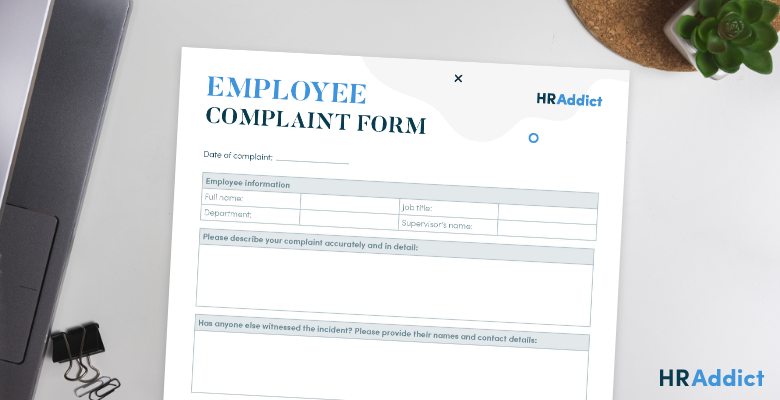
Download this structured, confidential tool to efficiently document and address workplace complaints. Employees can use the form to report grievances related to conflicts, discrimination, harassment or policy violations.
Use it to handle complaints in a fair, consistent and standardized manner, and prevent minor issues from escalating into serious disputes.
11. Employee Development Plan
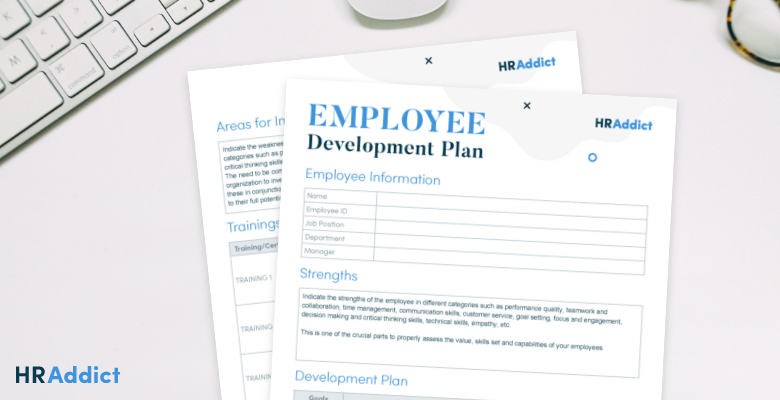
This employee development plan allows you to assess your employees’ strengths in different areas, ensuring long-term success for both the employee and your organization.
It’s designed to foster employee engagement, enhance performance and contribute to retention by aligning your employees’ personal growth with your company’s objectives. Use this plan to create personalized growth goals, track progress and support career development.
12. Employee Engagement Checklist
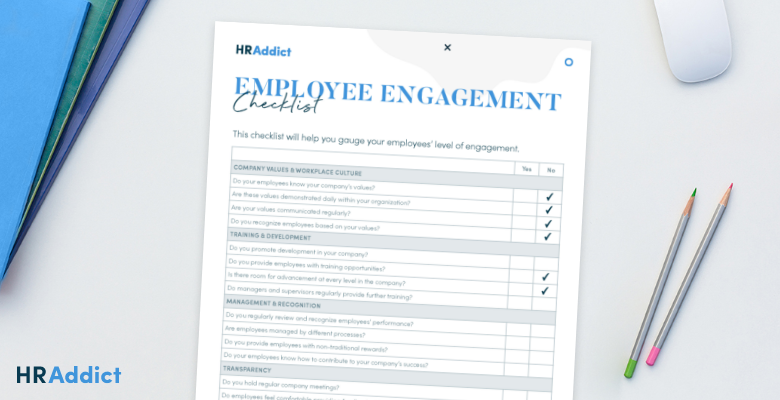
Want to enhance workplace satisfaction and productivity? Seeking to cultivate emotional commitment in your employees towards your organization? Then this HR document is essential for you.
Use it to get regular feedback from your employees while openly communicating with them about career development, compensation, and more. This will help you to foster a motivated workforce, leading to higher performance and long-term business success.
13. Employee Feedback Form
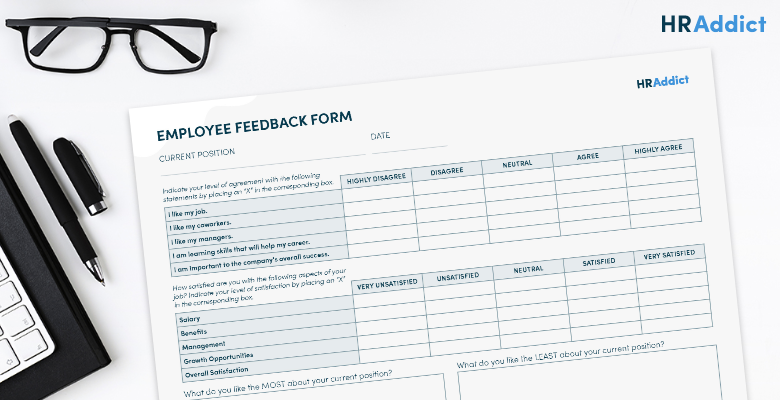
This printable resource aids you in collecting insights from your employees about their overall work experience, including their level of job satisfaction. Using this form, HR teams can identify how employees feel about their job in a constructive way.
Encouraging regular, structured feedback will create a more supportive working environment.
14. Employee Onboarding Planner
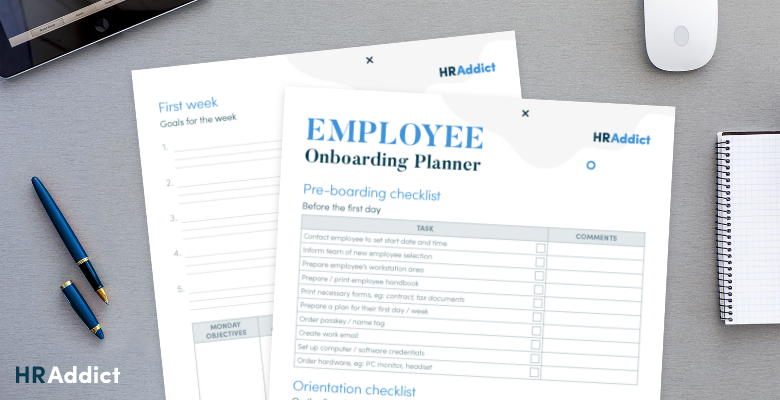
This comprehensive planner takes you through the entire onboarding process. Use it to ensure that all necessary preparations are carried out from the moment you hire a new employee. As you show them the ropes on their first day, use it to ensure you don’t miss any important details.
There are also dedicated sections for their first week, month and three months, which you can use to track their progress.
15. Employee Resignation Checklist
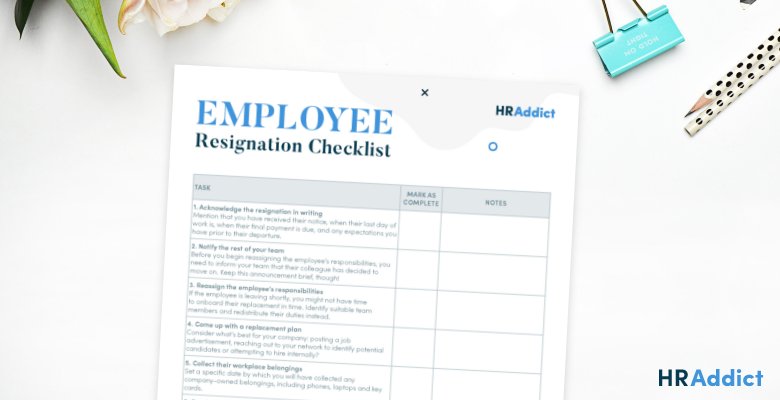
This resignation checklist is designed to make sure that your resignation process goes smoothly. Use it to guide you through each of the necessary steps, ensuring, for example, that you’ve acknowledged the resignation in writing, implemented a replacement plan and conducted an exit interview.
This checklist ensures compliance, minimizes disruptions and maintains professionalism. It facilitates a seamless transition, protecting both the company’s operations and the departing employee’s reputation.
16. Employee Training Plan

This practical tool allows you to track and document each employee’s training progress. Which training has been completed, and when? What’s pending?
Use the plan to ensure that your employees receive the necessary training they need to succeed in their roles — and to aid them in reaching their fullest potential!
17. Employee Warning Notice
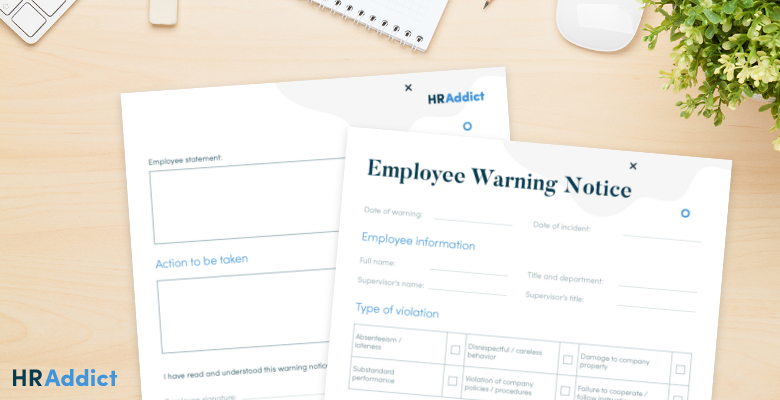
Formally document and communicate violations and warnings in a consistent and transparent way. Use the sheet to clearly outline the type of violation, and any previous warnings issues.
In addition, there’s a space for statements from the employer and the employee, which gives both parties the opportunity to address any concerns.
18. Exit Interview Form
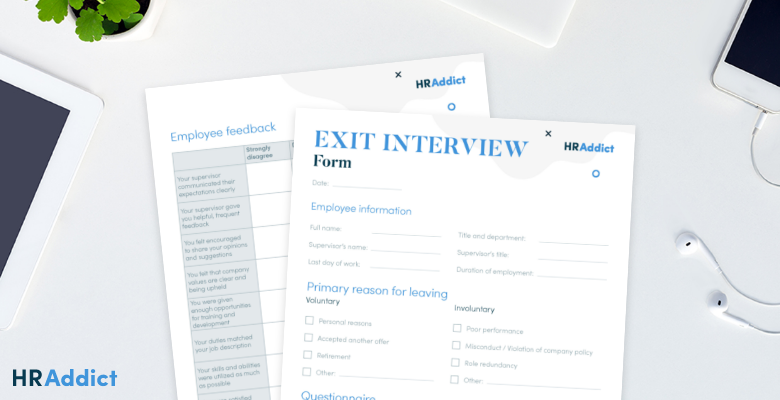
Has an employee handed in their notice? This exit Interview form will help you to gather feedback about their reasons for leaving, and their experiences at your company.
Which areas require improvement? How can you reduce employee turnover? Use the HR form to gain deeper insights into what might be causing employees to leave or stay.
19. HR Planning Template
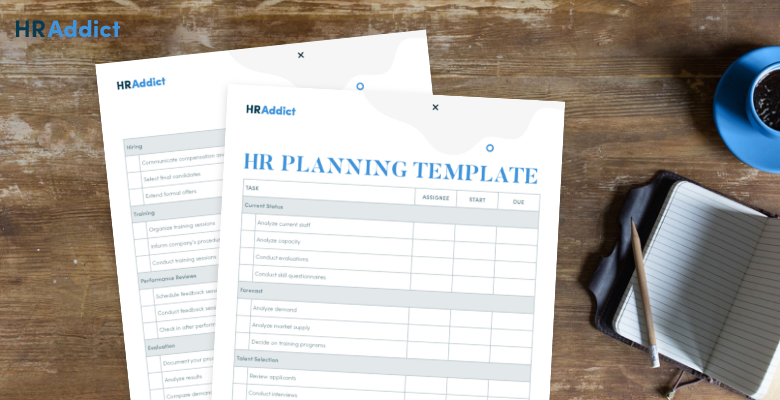
Use this HR template to effectively manage your current workplace needs and plan for future growth. Are the right people in the right roles at the right time?
Using this tool will simplify workforce forecasting, succession planning, talent management, and more. Because, ultimately, you want to reduce skill gaps, improve efficiency and align your HR strategies with your business’ goals.
20. Online Recruitment Checklist
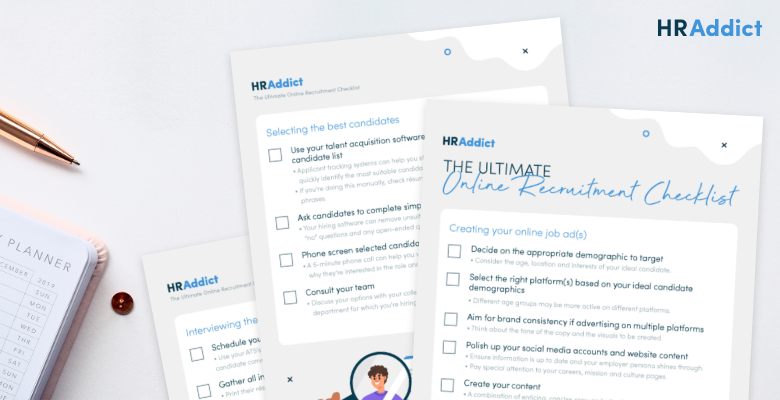
This comprehensive tool can be used to streamline your entire online recruitment process. From creating effective online job posts to conducting interviews with shortlisted candidates, this checklist ensures an organized and efficient hiring process from start to finish.
Attract top talent, improve candidate selection and enhance interview effectiveness with our online recruitment checklist!
21. Performance Review Checklist
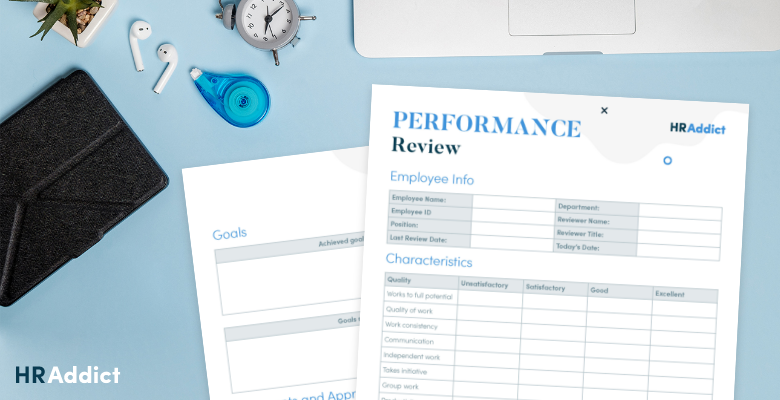
This checklist facilitates the process of evaluating employee performance.
It features a list of key qualities in one column (with space to add others), which you can assess with a simple rating system from ‘unsatisfactory’ right through to ‘excellent’. It also includes sections for goals and goals set, along with a comments box.
22. Policies for New Hires
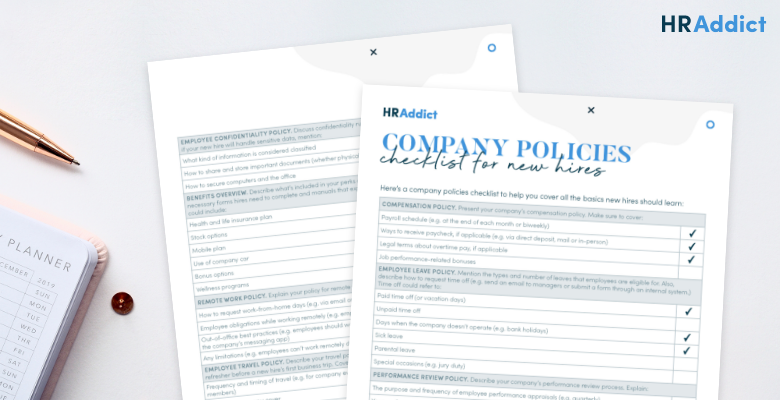
Onboarding new hires? Use this handy checklist to make sure they’re fully informed about essential company policies.
From compensation and leave to employee development and workplace safety, this checklist ensures consistency across all policy communication, while helping to integrate new hires into the company culture.
23. Preboarding Checklist

Before your new hire arrives, it’s vital to be fully prepared. Have you received copies of their relevant documentation? Do they have systems access? Who is their point of contact?
Use this checklist to facilitate a smooth transition for new hires, enhancing their initial experiences at your company and promoting a positive start.
24. Timesheet
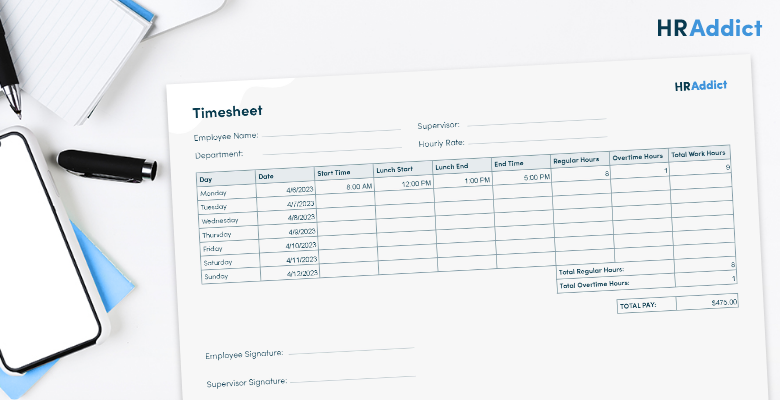
This easy-to-use template helps you keep track of your employees’ work hours. It records attendance, lunch breaks and overtime hours worked, ensuring accurate payroll processing and compliance with labor laws.
It’s indispensable for fair compensation, budgeting and operational efficiency. Asking your employees to use it improves productivity, prevents time theft and simplifies workforce management.
Final thoughts
Having the right HR documents in place is essential for managing key HR functions in a structured way. And using these 24 templates will save you time, reduce administrative burdens and ensure smooth HR operations.
For best results, be sure to review and update them regularly to stay aligned with evolving employment laws and workplace needs.
Ready to enhance your HR processes? Get access to download these templates weekly by subscribing to the HRAddict newsletter and take the first step toward a more organized, efficient HR department.
Which HR documents do you have in your arsenal? Let us know in the comments section below.
This article is a complete update of an earlier version originally published in 2018.
